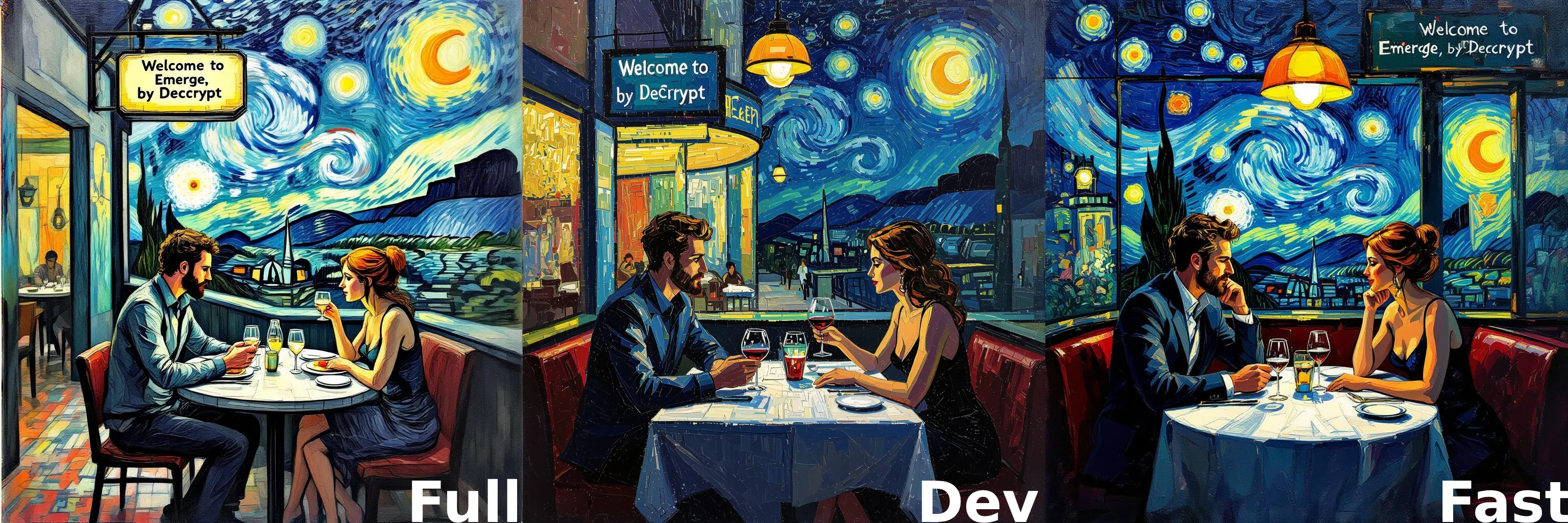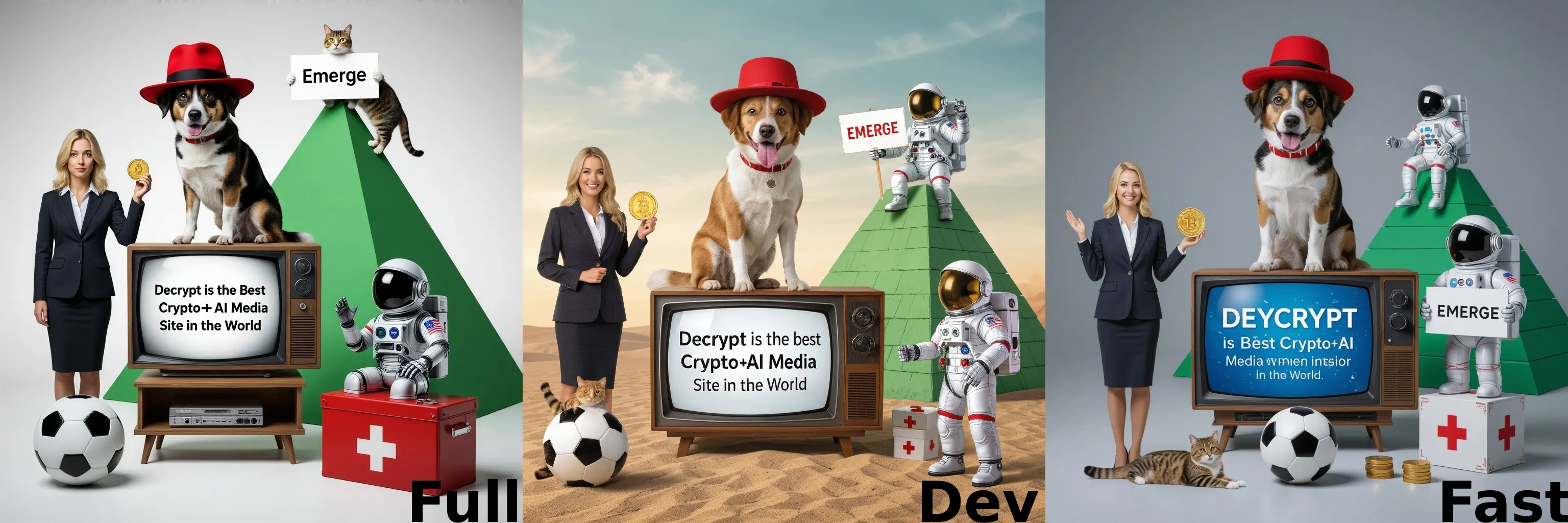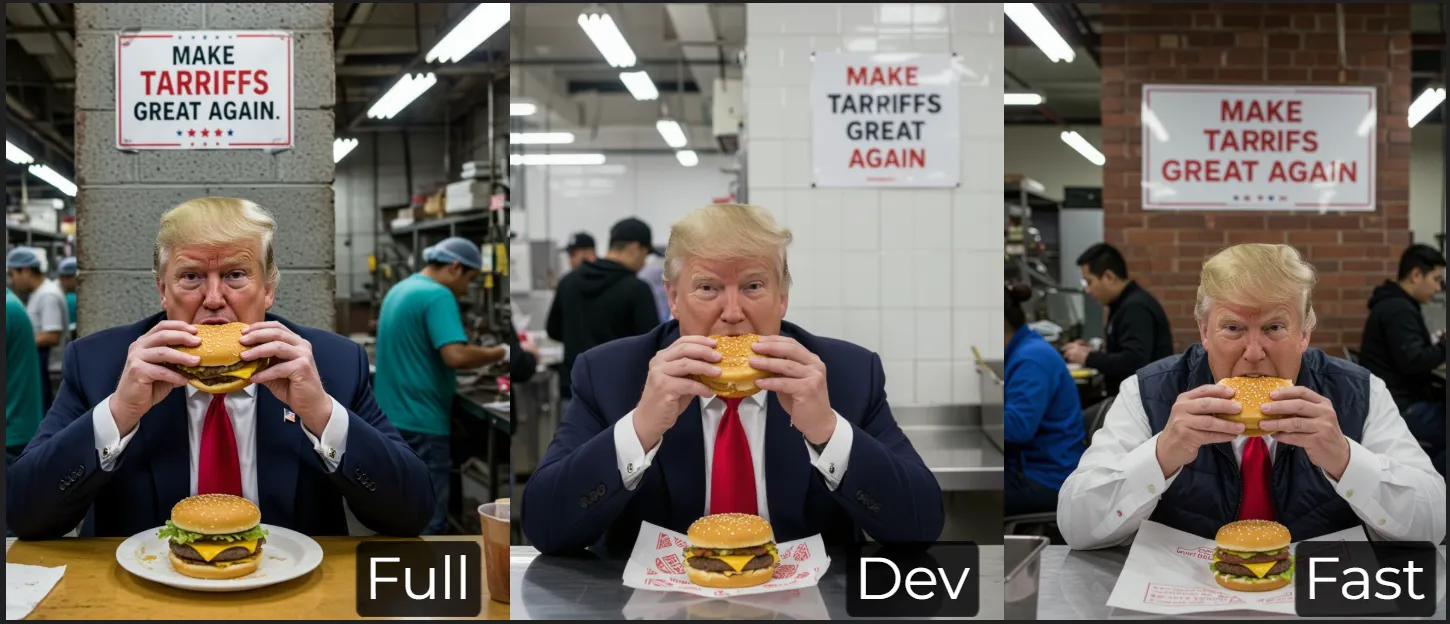Vivago ai released HiDream-I1 just last week, and it’s already sitting comfortably among the top 5 best image generators, outperforming established models like Flux, Auraflow, and Stable Diffusion 3.5—and even some of the best closed-source models like MidJourney v7, Ideogram v3, and Reve.

Vivago is an AI-powered creative platform developed by Sparking Innovations Limited, a company based in Hong Kong that offers a suite of tools for generating and editing visual content.
HiDream comes in three versions: “Full” provides the highest quality outputs and requires 50 steps to render a good image; “Dev” does its job in around 30 steps, while “Fast” takes around 16 steps to produce good results.
Of course, the more steps the model takes, the more detailed the image will be—and the more resources it will require.
But what makes these models different?
For starters, their size. HiDream packs a hefty 17 billion parameters that enable it to generate high-quality images across multiple styles in seconds. Just for reference, Stable Diffusion’s SD3.5 is nearly half the size.
HiDream-I1 is uncensored and commercially friendly. Released under the MIT license, it enables “unrestricted usage for both personal and commercial projects.”
However, Vivago noted that it filtered its training data to remove “problematic content,” but doesn’t restrict outputs, giving users “full creative freedom”—which means you’ll need a fine-tuned version if you want to generate NSFW imagery.
(Problematic content does not include generating blasphemous images of China’s President Xi Jinping, despite Vivago being a Hong Kong-based company.)

Users must also have some serious hardware to run it locally.
The full models require 27GB of VRAM to run, which can only be provided by behemoth GPUs that start at around $2,500.
However, within days of the image generator’s release, developers began creating quantized versions to run on more “modest” setups, requiring as little as 16GB of VRAM.
For users without high-end hardware, Vivago offers online access through its platform plus there’s a Hugging Face space demo. Fal AI also supports Hidream for cheap:
- Hidream Full: For $1, you can run this model approximately 20 times.
- Hidream Dev: For $1, you can run this model approximately 33 times.
- Hidream Fast: For $1, you can run this model approximately 100 times.
Testing the models
Here’s what we found when we put Hidream through its paces.
Anatomy understanding

Prompt: A Hawaiian kid staring at the camera while doing gestures with his hands
HiDream-I1 Full
HiDream-I1 Full nails human anatomy with professional-grade accuracy.
Hands look natural with correct finger counts and proportions. Facial features align properly with realistic eye spacing and ear positioning. Body structure maintains proper proportions throughout, with good definition.
Its only weak spots show up in extremely complex poses where joints occasionally look stiff.
Score: 9/10
HiDream-I1 Dev
HiDream-I1 Dev renders solid anatomy while trading some detail for speed. Fingers stay intact but sometimes show minor distortions in length or thickness, which, in our generation, the model hides with blur.
Faces remain proportional, but with less-defined features. It handles standard poses well, but sometimes struggles with overlapping limbs.
Oddly, it sometimes beats the Full model on natural textures, with fewer weird artifacts in hair and more imperfections that make the skin look more natural.
Score: 8.5/10
HiDream-I1 Fast
HiDream-I1 Fast makes obvious anatomy compromises for speed. The classic AI hand problems show up—fused fingers, wrong counts, odd bending. Faces maintain basic structure, but features can drift slightly.
Bodies in some specific generations look warped with strange shoulder widths or arm lengths. Surprisingly, it sometimes renders clothing folds and hair flow more naturally than higher-tier versions.
One good thing we found: When generating hands with extra fingers, it is easy to tell which one is the “wrong” generation, meaning it’s easy to delete that artifact, and the hand will remain natural.
If it weren’t for that extra finger, we could argue that it generated a better hand than Dev, with more defined fingers and joints.
Score: 7/10
Winner: HiDream-I1 Full
Artistic understanding

Prompt: A man and a woman having dinner in a futuristic restaurant, illustration in the style of Vincent Van Gogh. The restaurant has a sign saying “Welcome to Emerge, by Decrypt,” impasto, oil on canvas
HiDream-I1 Full
The Full model achieves the most sophisticated balance between Van Gogh’s style and the heavy impasto technique.
Brushwork mimics oil-on-canvas technique with visible paint thickness and directional strokes. The composition is dynamic, and the lighting is very present, almost too bright.
The woman’s body has additional legs—a detail that requires careful observation to notice. The restaurant environment features rich details that enhance rather than distract from the central figures. The “Welcome to Emerge by Decrypt” sign appears as a natural element within the painterly world, but it was generated with a typo. The Full model’s only weakness is occasional perfectionism that sometimes looks too digital in smaller details.
Score: 9/10
HiDream-I1 Dev
Dev maintains fidelity to Van Gogh’s style with more extreme impasto texture and directional brushwork. The couple’s interaction feels more natural, and the overall atmosphere is darker than the one generated by Hidream Full.
Like Full and Fast, this model didn’t really generate any futuristic elements in the composition. Colors are vibrant but controlled, with the characteristic saturated blues and warm yellows.
The signage integrated into the composition is poorly written, but the representation seems to blend more with the restaurant’s aesthetic than the way it was portrayed in Full’s generation. Dev particularly shines in capturing Van Gogh’s emotional intensity through lighting effects and contrast.
Score: 8.5/10
HiDream-I1 Fast
The fast version captures Van Gogh’s energetic brushwork surprisingly well despite its speed optimizations.
The scene composition is dynamic with strong foreground-background separation. Characters have expressive poses that communicate relationship and emotion, but are the least accurate in terms of style. The scene is more indoors, which means it focuses more on the subject than other accessory elements.
The “Emerge by Decrypt” sign appears as a natural part of the environment rather than an afterthought, but it is still not perfectly generated.
Fast surprisingly outperforms higher versions in background details, with more varied and smoother-looking brushstrokes in the sky.
Score: 8.5/10
Winner: HiDream-I1 Full
Prompt Adherence and Spatial Awareness Test

Prompt: A dog with a red hat standing on top of a TV showing the word ‘Decrypt is the best Crypto+AI media site in the world’ on the screen. On the left there is a blonde woman in a business suit holding a coin, on the right there is a robot standing on top of a first aid box, a green pyramid stands behind the box,. The overall scenery is surreal. A cat is standing upside down on top of a white soccer ball, next to the dog. An Astronaut from NASA holds a sign that reads “Emerge” and is placed next to the robot
HiDream-I1 Full
HiDream-I1 Full struggled with this prompt. The dog sits centered on the TV with the message clearly legible and a red hat accurately represented.
The businesswoman appears proper on the left with a realistic coin gesture. The astronaut and first aid box are positioned correctly to the dog’s right, and the pyramid is behind these elements.
But that’s where the accuracy ends. The other elements, if represented, appear in random locations.
Score: 8/10
HiDream-I1 Dev
Dev creates a more atmospheric scene that balances prompt adherence with artistic interpretation, trying to convey a more surreal representation.
The dog wears the correct red hat and sits atop the television; the TV text suffers from perspective distortion but is accurate.
The astronaut stands correctly positioned next to the green pyramid, even though the person holding the Emerge sign is a second astronaut sitting on top of the pyramid.
The desert setting enhances the surreal quality effectively. The cat fails to balance on the soccer ball as requested, but is better represented than in Full’s generation.
Score: 8.5/10
HiDream-I1 Fast
Fast includes most requested elements, but with limited spatial accuracy.
The dog wears the red hat and is on top of the TV. The screen displays text, but it’s illegible after the word “media”.
The woman appears in the correct spot and interestingly enough it was the only model that generated the astronaut standing on top of the first aid box, in front of a pyramid and holding the sign that reads “Emerge.”
The cat lies near the soccer ball, and some additional coins and another astronaut were generated. The broader composition is there (showing the elements), but it fails at details (like the text) due to the obvious compromise in rendering steps.
Score: 8.2/10
Winner: HiDream-I1 Dev
Realism

Prompt: Donald Trump eating a hamburger in a busy sweatshop. On the wall there’s a sign that reads “Make Tariffs Great Again”
HiDream-I1 Full
Full achieves the strongest sense of visual narrative and realism. Trump is centered under a well-rendered sign (though with a typo). The lighting is consistent, and the environment closely resembles a sweatshop, with workers wearing uniforms and hairnets.
The setting has industrial cues—raw cinder block walls, cluttered workstations—which effectively support the prompt.
Trump’s suit is believable and textured, and he interacts naturally with the hamburger. There’s a second burger on the plate, which, like the misspelling of tariffs, is an error that happens in all generations.
Technical flaws include minor distortions in Trump’s hand anatomy. Nonetheless, it’s the only version to properly depict all elements with strong coherence.
Score: 9/10
HiDream-I1 Dev
HiDream-I1 Dev offers a well-lit and sharply focused image with a professional photographic tone, though it strays slightly from the prompt’s grit.
The setting resembles a clean commercial kitchen more than a sweatshop. Workers in the background are casually dressed, and the environment lacks visual indicators of labor intensity.
The sign is accurately placed and says “MAKE TARRIFFS GREAT AGAIN” (same misspelling), but its print quality is flatter. Trump’s pose is clear and symmetrical, and the burger looks realistic.
Also, Dev’s render of Trump’s face seems more realistic than the generation using Hidream Full, as this one is not overly sharpened.
Score: 8.5/10
HiDream-I1 Fast
HiDream-I1Fast achieves a moderate level of realism, with accurate lighting, depth, and a believable Trump figure, but it misses key emotional and contextual cues.
The environment seems more like a sweatshop than in Dev’s generation. The sign reads “MAKE TARRIFS GREAT AGAIN” (misspelling again), and although it is legible, it is the only one that appears in one single color, which could pass as more realistic.
The burger is adequately rendered, and Trump’s posture is natural, but his suit jacket is replaced by a vest—the prompt does not specify anything about clothing. The lighting does not correspond to the scene, but it’s overall a very accurate representation
Score: 8/10
Winner: HiDream-I1 Full
The Verdict
The HiDream-I1 models are a welcome shift in the AI image generation landscape and put open-source models once again in the public eye after the release of a new generation of powerful closed-source AI Image generators.
The Full version consistently outperformed other models across nearly all tests, though the Dev model offers an impressive compromise between speed and quality.
Even the Fast version, while clearly sacrificing detail and accuracy, still produces results that would have been considered cutting-edge just months ago.
Unlike closed-source competitors, HiDream’s MIT license and open-source nature mean artists, developers, and businesses can adapt and build upon it freely.
The high hardware requirements present an important barrier, but if history repeats itself, the community will continue optimizing the model for broader accessibility.
For creators who’ve been limited by the censorship of commercial models or frustrated by licensing restrictions, HiDream offers a compelling alternative.
The models are pretty cheap to run on cloud servers on a pay-per-use basis, which makes them a strong alternative to closed-source models that charge for monthly or yearly subscriptions.
As quantized versions (smaller models) improve and more fine-tuned (customized models) emerge, HiDream’s impact on the generative AI landscape will likely grow even further.
Just wait a few weeks and check on Hugging Face and Civitai for updates. In the meantime, Flux finetunes are still very powerful and efficient.
Edited by Sebastian Sinclair
Generally Intelligent Newsletter
A weekly AI journey narrated by Gen, a generative AI model.
https://decrypt.co/314940/vivago-hidream-image-generator-beats-major-players








